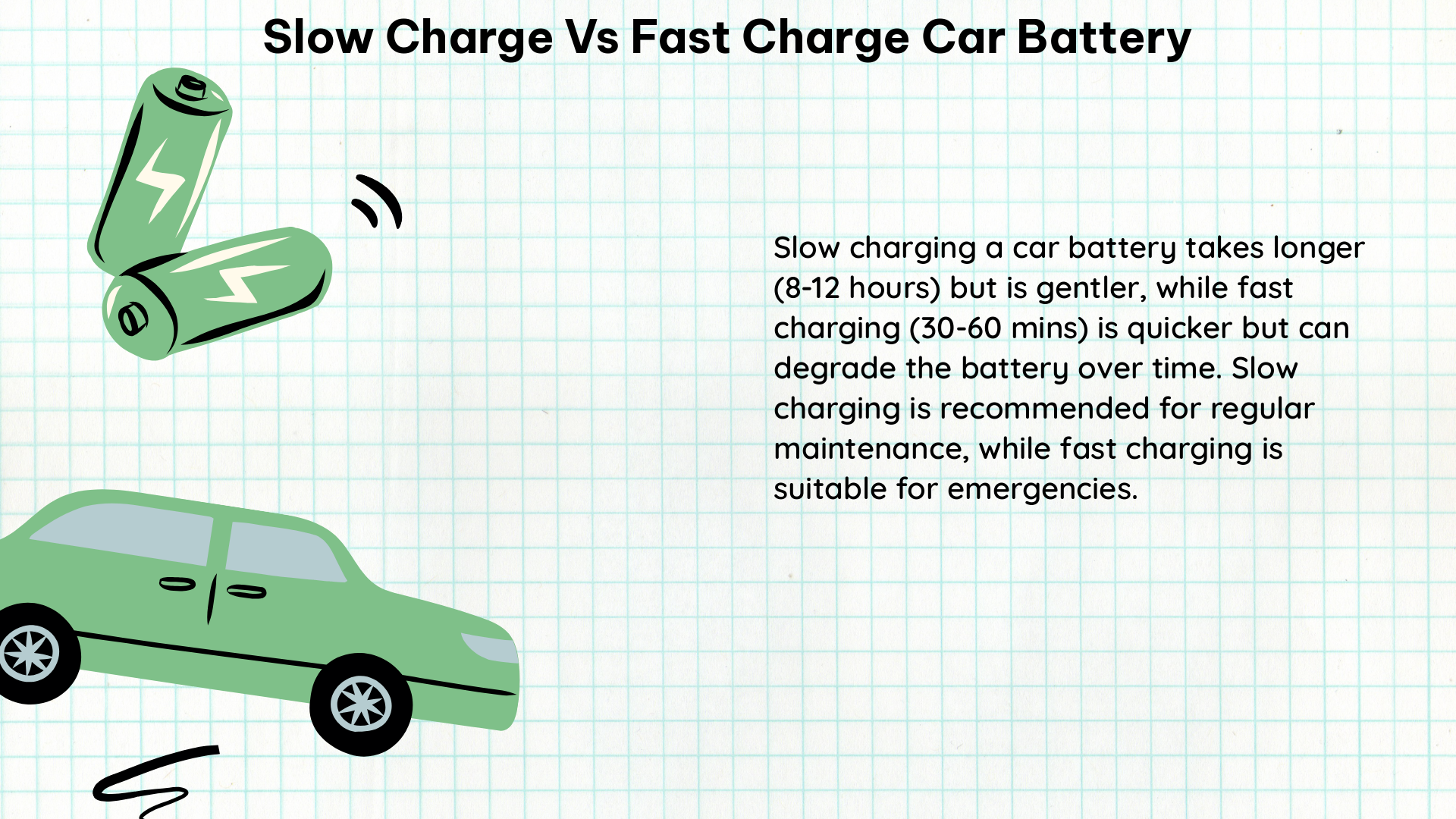Slow charging and fast charging are two distinct methods of replenishing the battery in an electric vehicle (EV). Understanding the nuances between these approaches is crucial for optimizing battery health and performance. This comprehensive guide delves into the technical specifications, battery health implications, and practical considerations to help you make informed decisions about charging your EV.
Technical Specifications
Slow Charging
- Charging rate: Less than 20 kW
- Typical charging time: 8-12 hours for a full charge
- Commonly used for overnight or home charging
Fast Charging
- Charging rate: 50 kW or higher
- Typical charging time: 30-60 minutes for an 80% charge
- Commonly used for public charging stations or emergency situations
Battery Health Implications

Slow Charging
- Puts less stress on the battery, leading to a longer lifespan
- A study by Recurrent Auto found that the rate of range degradation is statistically similar between cars that fast charge at least 90% of the time and those that do so less than 10% of the time
- Helps maintain the battery’s overall health and capacity over time
Fast Charging
- Can put more stress on the battery, potentially leading to a decrease in battery lifespan
- Repeated use of fast charging may accelerate the rate of battery degradation
- Extreme temperatures and very low or high states of charge can also negatively impact battery health
Charging Speed Considerations
Slow Charging
- Recommended for daily or routine charging to preserve battery health
- Ideal for overnight charging at home or workplace
- Allows the battery to be charged at a gentler pace, reducing stress
Fast Charging
- Beneficial when time is of the essence, such as during long-distance travel or emergency situations
- Provides a quick boost in charge, allowing you to continue your journey
- Should be used judiciously to avoid excessive stress on the battery
Level 1 vs. Level 2 Charging
- Level 1 charging (120V AC) and Level 2 charging (240V AC) do not have a measurable effect on battery health
- The primary factors affecting battery degradation are high charging rates, extreme temperatures, and prolonged periods at very low or high states of charge
DIY Tips
- Use slower charging speeds whenever possible to help prolong battery lifespan.
- Avoid excessive use of DC fast charging, maintaining high battery temperatures, charging in below-freezing temperatures, and letting the car sit at 0% or 100% state of charge for extended periods.
- Utilize a battery monitoring system to track the health and charging dynamics of your EV’s battery.
- Consult your EV manufacturer’s recommendations for optimal charging practices specific to your vehicle model.
- Consider the ambient temperature and your driving patterns when deciding between slow and fast charging options.
Conclusion
In the world of electric vehicles, understanding the nuances between slow charging and fast charging is crucial for maintaining battery health and maximizing the longevity of your EV’s power source. By following the technical specifications, considering the battery health implications, and implementing the DIY tips outlined in this comprehensive guide, you can make informed decisions about charging your car and ensure your battery performs at its best for years to come.
References
- Fast Charging vs. Slow Charging: Study Reveals Difference in Range Degradation
- Best Amp Setting for Level 2 Charging Speed for Battery Health
- Under what circumstances should you use the fast charge or trickle charge setting?
- Slow Charge vs Fast Charge EV Charging
- Battery Charging Rates and Their Impact on Battery Life

The lambdageeks.com Core SME Team is a group of experienced subject matter experts from diverse scientific and technical fields including Physics, Chemistry, Technology,Electronics & Electrical Engineering, Automotive, Mechanical Engineering. Our team collaborates to create high-quality, well-researched articles on a wide range of science and technology topics for the lambdageeks.com website.
All Our Senior SME are having more than 7 Years of experience in the respective fields . They are either Working Industry Professionals or assocaited With different Universities. Refer Our Authors Page to get to know About our Core SMEs.